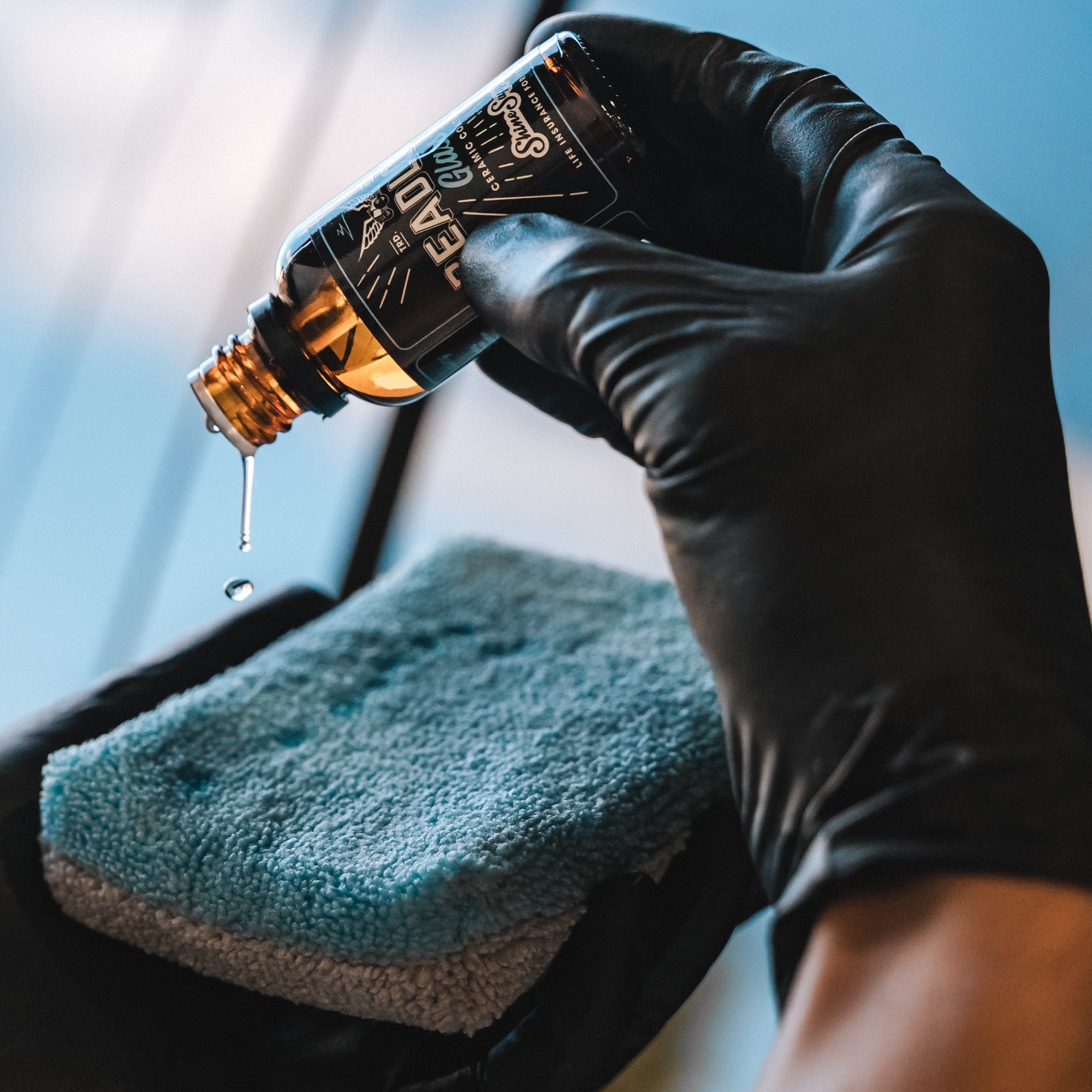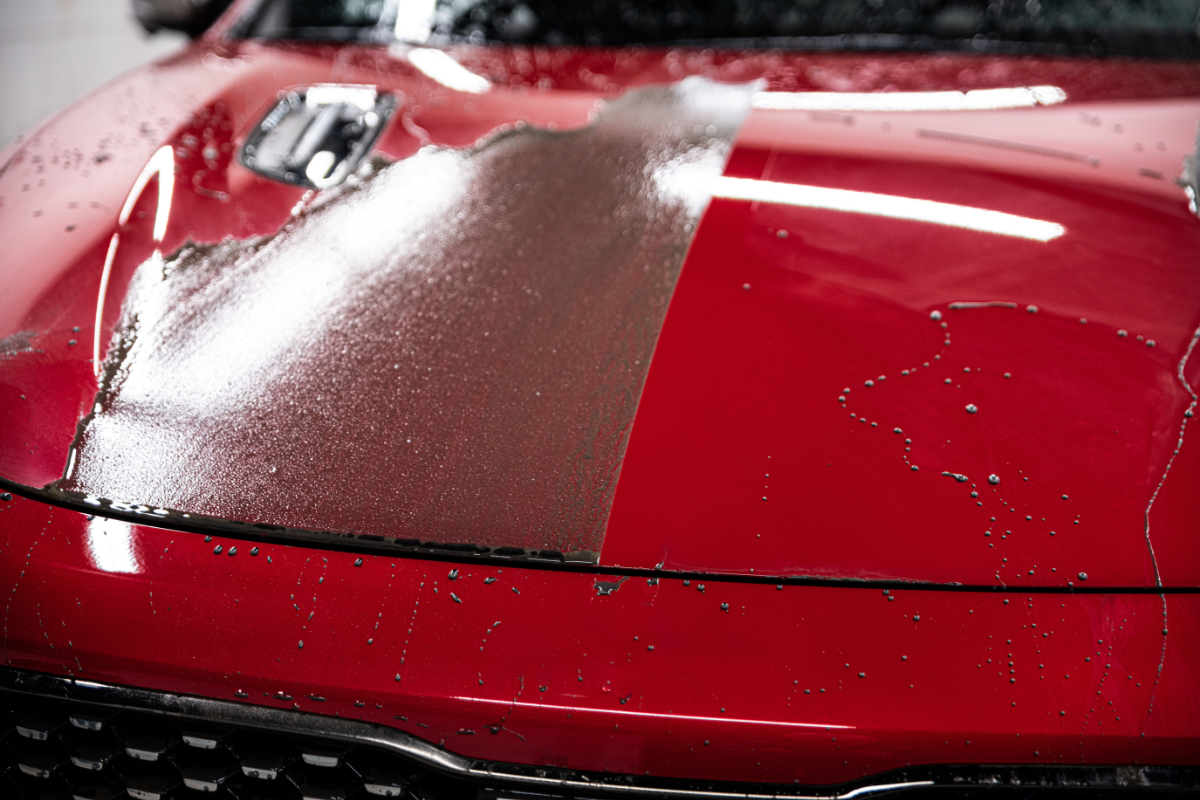Exactly How Ceramic Coating Shields Your Lorry from Scratches and UV Damages
Wiki Article
Checking Out the Science Behind Ceramic Covering and Its Effect On Automobile Explaining
The application of ceramic finishing in cars and truck detailing stands for a substantial advancement in automotive care, rooted in its advanced chemical residential or commercial properties, largely silica dioxide and titanium dioxide. Understanding the scientific research behind these products discloses not just the safety benefits they offer but likewise their function in boosting a lorry's visual longevity. As we explore the complexities of the application process and the lasting implications for car maintenance, it becomes clear that the choice of ceramic finishing can essentially change one's method to automobile treatment. What factors to consider should be made prior to devoting to this transformative remedy?What Is Ceramic Layer?
Ceramic covering is a modern option that has obtained popularity in the auto outlining sector for its capability to give lasting defense for automobile surfaces. This sophisticated protective layer is normally composed of silica dioxide (SiO2), which develops a solid bond with the car's paint, developing a durable shield versus environmental pollutants. Unlike traditional wax or sealants, ceramic coatings provide premium resistance to UV rays, chemical stains, and physical abrasions.
The application of ceramic finish involves a precise procedure, where the vehicle's surface is thoroughly cleaned up and sanitized before the finishing is used (Ceramic Coating). As soon as cured, the finishing boosts the vehicle's gloss, depth, and clearness, giving a showroom-quality finish that lasts for many years. Among the vital benefits of ceramic covering is its hydrophobic buildings, which fend off water and dirt, making upkeep much easier and lowering the regularity of washes
The Chemistry of Ceramic Finishing
A basic facet of ceramic layer hinges on its chemical composition, mainly defined by the existence of silica dioxide (SiO2) This compound is essential to the formation of a resilient, protective layer that bonds chemically to the automobile's surface area. When applied, the SiO2 molecules go through a process known as polymerization, wherein they form a network of interconnected structures. This results in a durable, hydrophobic surface area that repels water and contaminants.In addition to SiO2, many ceramic coatings include titanium dioxide (TiO2) and various other additives to enhance their efficiency attributes. TiO2, for example, adds to raised firmness and chemical resistance. The interaction in between these substances produces a distinct molecular framework that uses a high level of protection versus environmental factors such as UV rays, acid rain, and oxidation.
In addition, the application process commonly includes a precise preparation of the surface area to make sure optimal attachment of the finish. This chemistry not only makes certain a lasting coating however also improves the aesthetic charm of the vehicle. Recognizing the intricate chemistry behind ceramic coverings is crucial for outlining specialists who aim to offer premium security and long life for their clients' automobiles.
Benefits of Ceramic Finishing
While detailing professionals frequently highlight the advantages of ceramic finishes, their advantages prolong far past aesthetics. The main advantage transcends defense versus ecological pollutants. Ceramic finishings create a hydrophobic surface that fends off dust, grime, and water, considerably minimizing the regularity of washes and the effort needed to preserve a lorry's look. This protective layer also shields the paint from dangerous ultraviolet rays, protecting against oxidation and fading over time.Moreover, ceramic look at here now coatings enhance the long life of the automobile's coating. Unlike standard waxes or sealants, which may last a couple of months, ceramic layers can sustain for many years, offering a long-term solution for car treatment. This longevity converts to set you back financial savings, as proprietors are much less likely to need regular reapplication.
In addition, ceramic coatings are immune to chemical stains and etching, which can take place from acidic compounds like bird droppings or tree sap. This resistance not only protects the lorry's aesthetic appeals yet likewise minimizes potential damages - Ceramic Coating. On the whole, the investment in ceramic layer uses vehicle proprietors a considerable return in terms of security, ease of upkeep, and durable visual allure, making it a significantly popular selection in the realm of automotive outlining
Application Process Described

When the surface is sufficiently prepared, the ceramic covering can be applied. Using an applicator pad, the technician applies the finish in tiny sections, functioning in a crosshatch pattern to ensure even coverage.
After using the coating, the vehicle should be allowed to heal, which pop over to these guys might take several hours to numerous days, depending on the details product utilized. Throughout this duration, it is vital to keep the vehicle far from moisture and pollutants. When cured, the ceramic covering creates a solid bond with the paint, supplying improved protection and a glossy finish. Appropriate application is important to make the most of the longevity and performance of the ceramic layer.

Long-lasting Effect On Car Treatment
The long-term effect of ceramic coating on automobile care is considerable, as it essentially modifies just how owners keep their automobiles. By creating a durable, hydrophobic layer on the lorry's surface, ceramic coverings reduce the adherence of dust, grime, and impurities. This property reduces the frequency of washing needed, ultimately saving water and cleansing items.In Addition, the UV defense supplied by ceramic layers assists to avoid oxidation and fading of the automobile's paint, protecting its visual charm and resale worth in time - Ceramic Coating. This safety obstacle likewise reduces the probability of scrapes and swirl marks, which prevail problems in traditional paint surfaces
Additionally, ceramic finishes facilitate simpler upkeep, allowing owners to cleanse their lorries with very little effort. The smooth surface area makes it hard for pollutants to bond, making it possible for easier removal throughout regular cleaning.
In the lengthy run, the financial investment in ceramic finish may cause cost savings in car care items and solutions. On the whole, the enduring benefits of ceramic finishes not only improve the appearance of cars however likewise add to an extra lasting and efficient strategy to car upkeep.
Conclusion
To conclude, the application of ceramic covering stands for a significant advancement in automobile detailing, driven by its distinct chemical composition of silica dioxide and titanium dioxide. This modern technology not just enhances the visual allure of vehicles however additionally provides robust security against environmental risks and use. The long-term advantages, consisting of reduced maintenance regularity and boosted resilience, underscore the worth of ceramic layers as a crucial investment for maintaining lorry look and honesty in time.
Report this wiki page